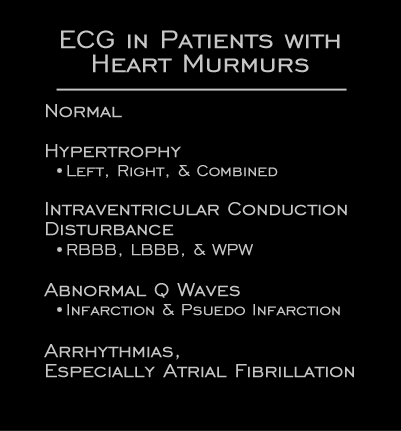The electrocardiogram in patients with heart murmurs will reflect the severity of the underlying lesion and may show any of the characteristics listed here.

The ventricular hypertrophy may be left, right or combined and the intravenricular conduction disturbance may be right bundle branch block, left bundle branch block or ventricular pre-excitation. The abnormal Q waves may be due to an infarction or to factors that may mimic an infarction, such as septal hypertrophy or ventricular pre-excitation and the arrhythmias are most often supraventricular, particularly atrial fibrillation.
It is important to recognize , however, that the electrocardiogram may be totally normal, even in the patient with an impressive cardiac murmur.
